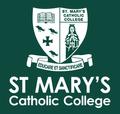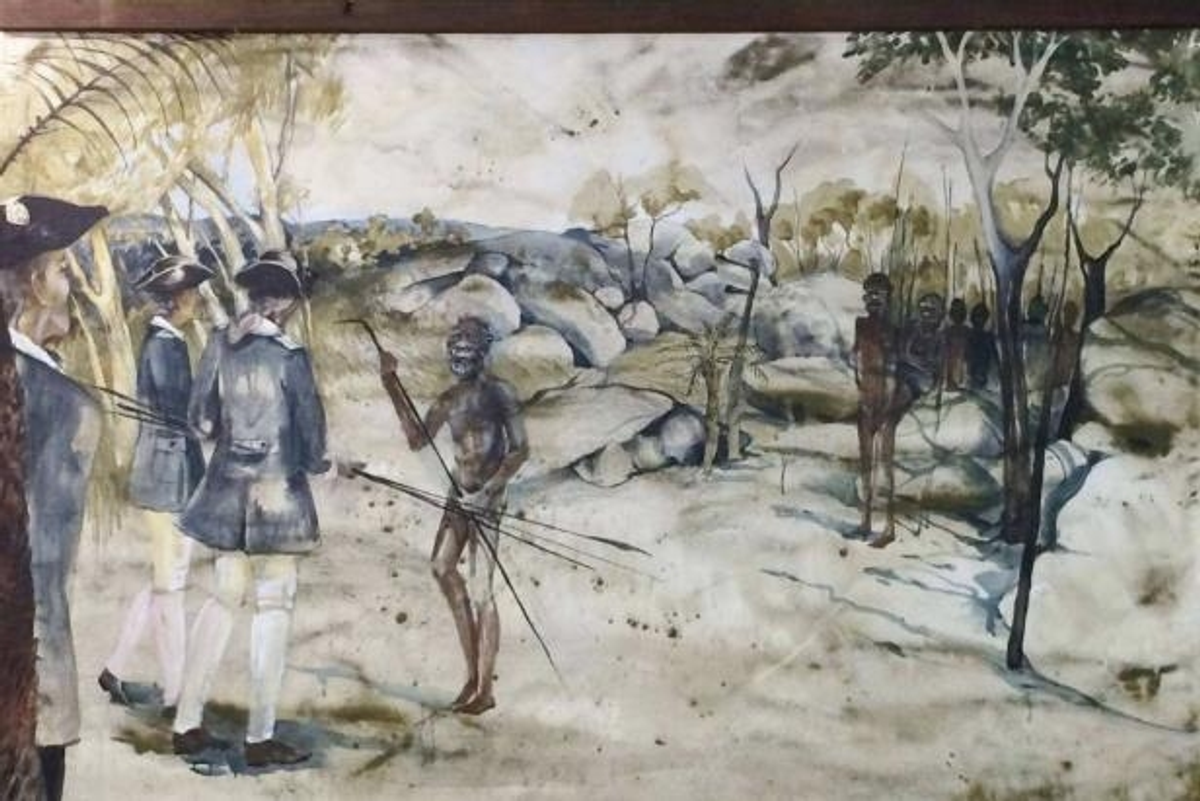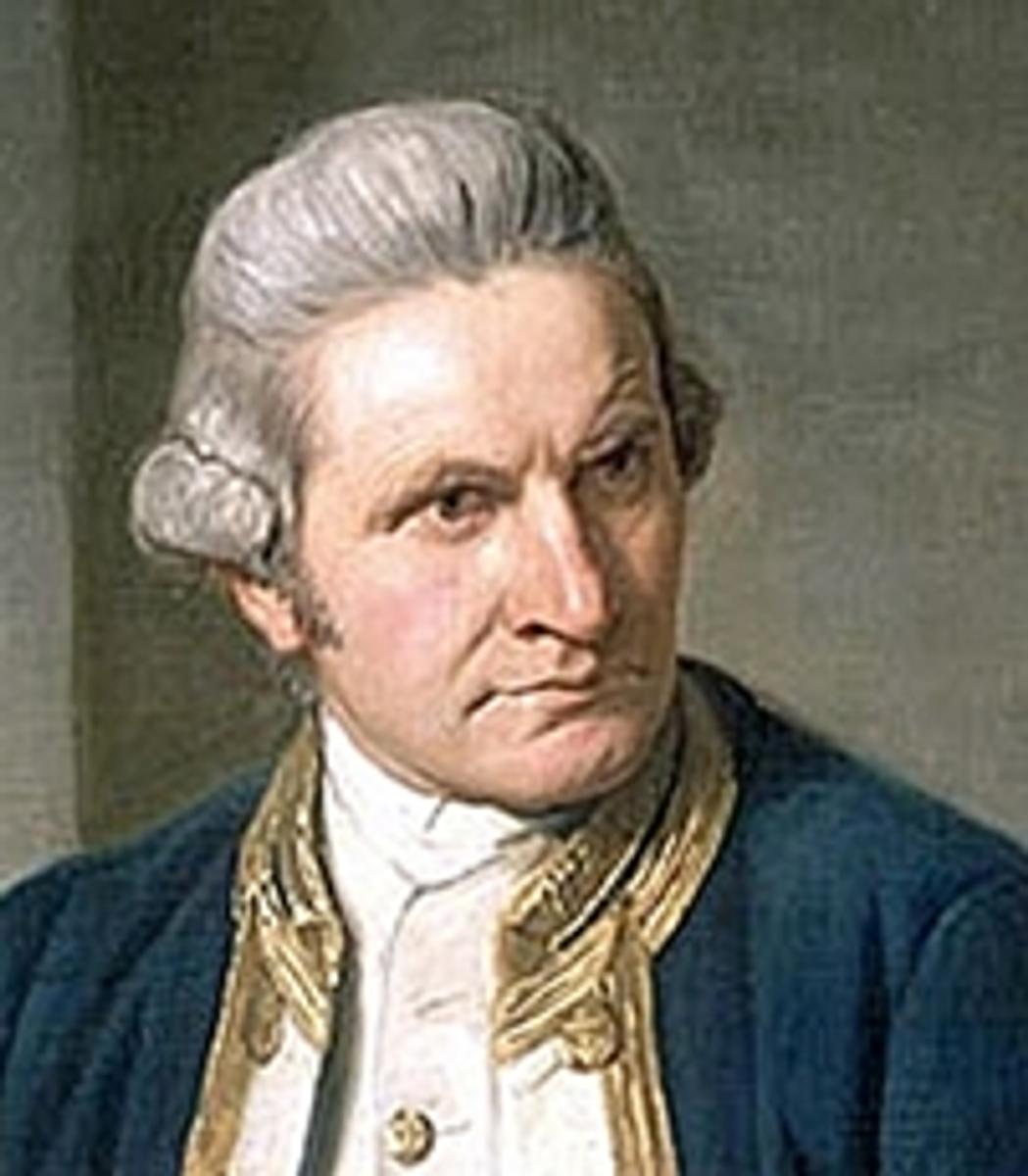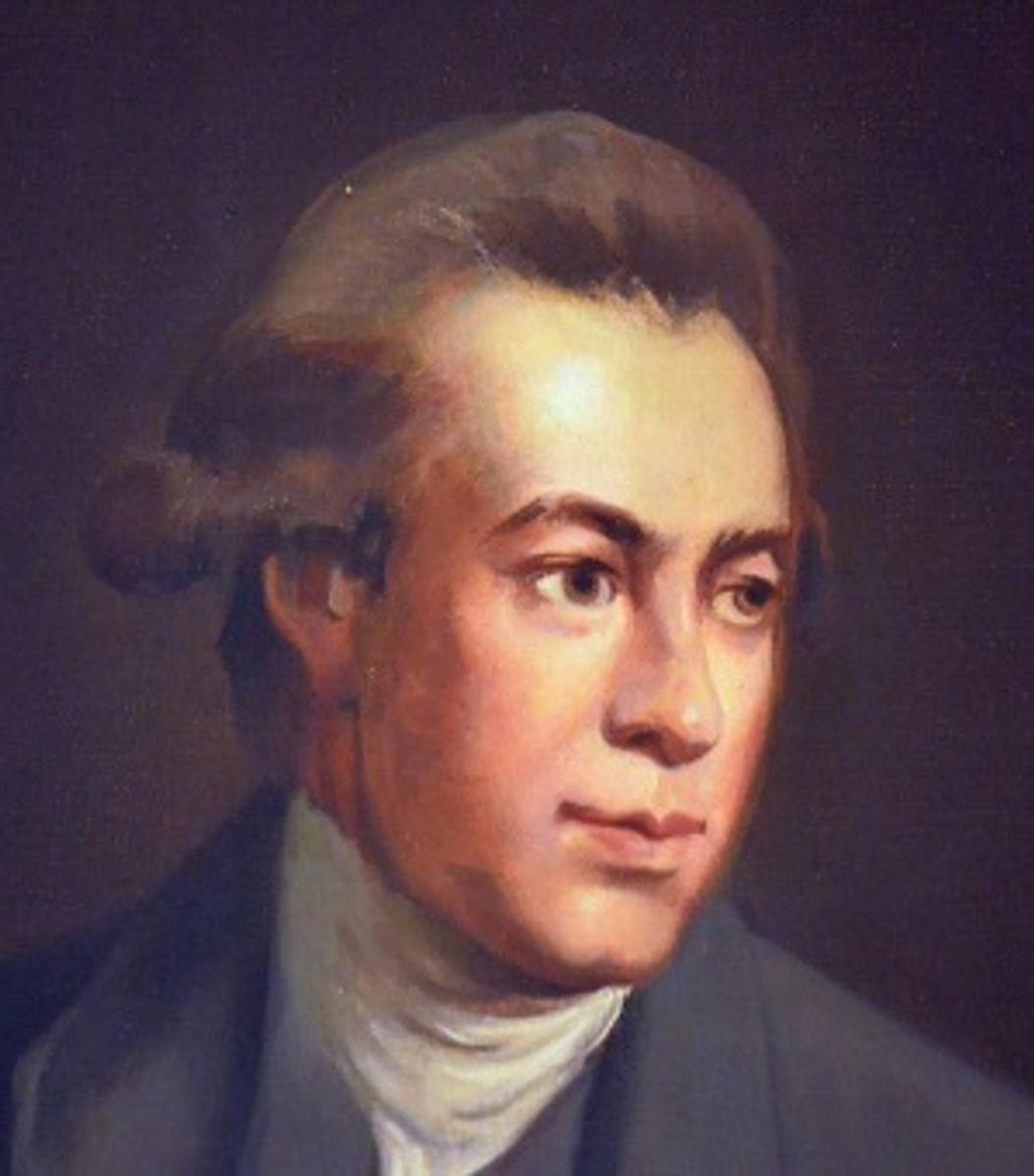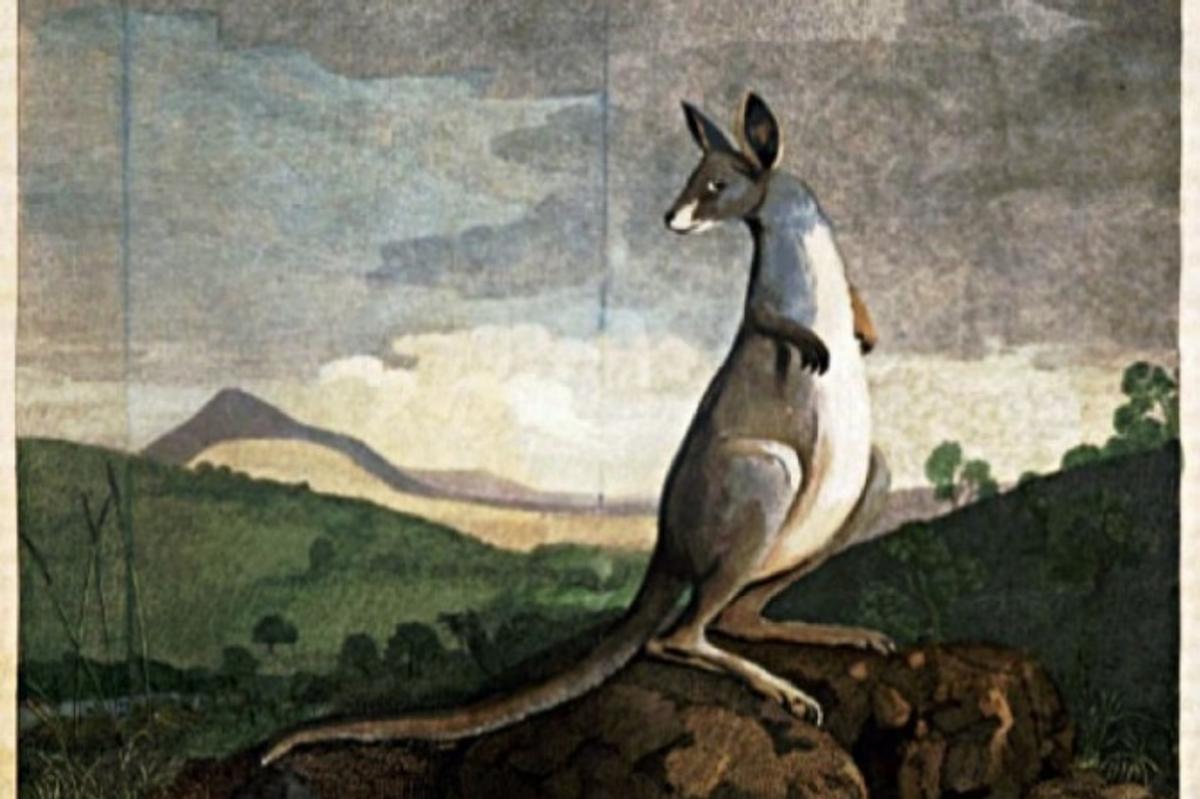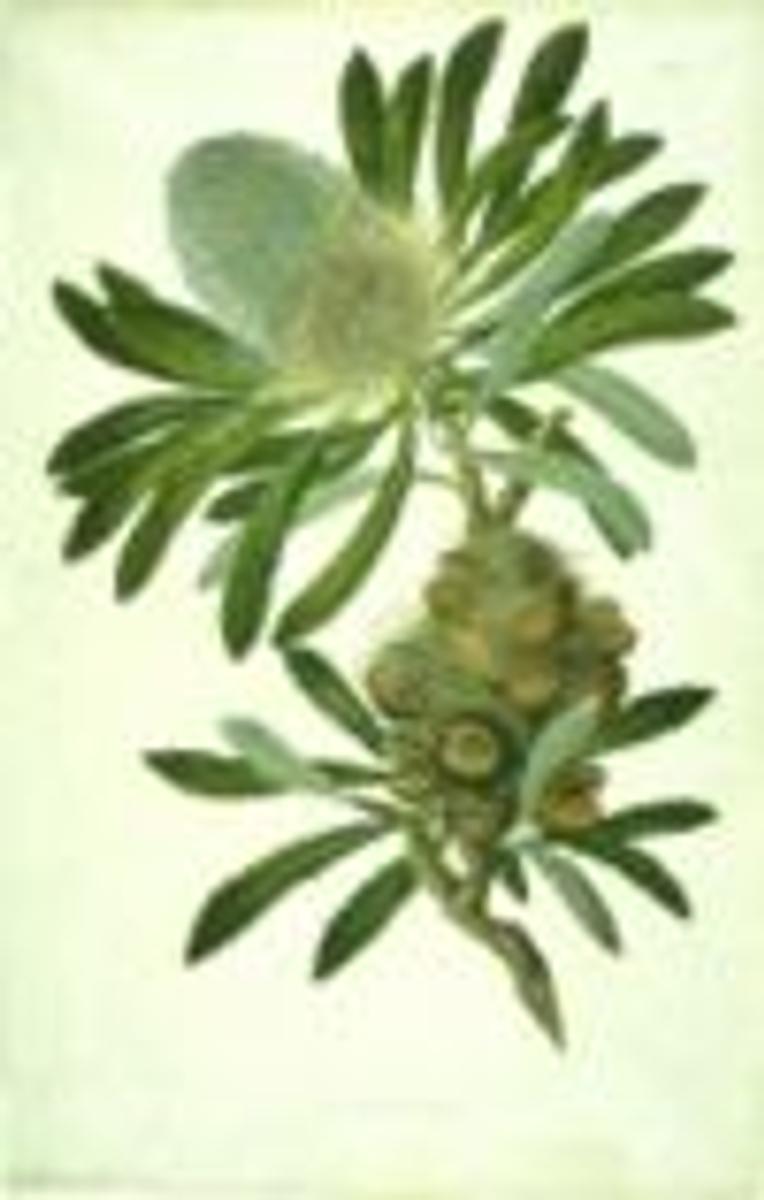250th Anniversary

Margaret Marton
Humanities Teacher
250th Anniversary of Cook’s Endeavour Voyage of Discovery - a voyage from which we continue to discover!
Part 3: Why is Cooktown, and the events which occurred there 250 years ago, important to Australia’s Journey of Reconciliation today?
© Cooktown Re-enactment Association "I handed the spears back to him which reconciled everything," Captain Cook wrote in his journal.
The place where Australia's first recorded act of reconciliation between indigenous and non-indigenous Australians occurred is the Reconciliation Rocks in Cooktown. This site has been nominated to be placed on Australia’s National Heritage List and the township of Cooktown is planning to erect a series of statutes to commemorate this event. In 1770, a full 18 years before Australia’s settlement, the first recorded act of reconciliation took place between the Guugu Yimithirr Bama (the local indigenous community) and Cook’s Endeavour crew in Cooktown, FNQ.
Bama man Harold Ludwick says: “Cooktown shows a story of [the] humanity of our people when they met with Captain Cook. They instigated meetings with Captain Cook…and it was that understanding from both cultures that made that ground zero for the birth of Australia.”
Alberta Hornsby, a Bama Historian and Guugu Yimithirr woman and part of the team behind the project, says: “We try to celebrate two cultures, one people because that’s the way it ought to be”.
What is this story of reconciliation? Why is Cooktown so proud of this historical episode?
What is this story of reconciliation?
Here is the event from the journals of two people directly involved, Captain Cook and Mr Joseph Banks, from Bama historians like Harold Ludwick and Alberta Hornsby, and from Peter Fitzsimons’ book entitled James Cook.
18 June 1770: The Endeavour at last beached in Cooktown.
10 July 1770: After 23 DAYS in the harbour the Endeavour is repaired, and the Europeans are reloading gear ready to sail. In the morning, the Europeans have their first contact with local Indigenous people ON THE INDIGENOUS TERMS. Cook had realised not to approach the “natives” but left them to approach the boat.
Banks’ Journal –“ two Indians … venturd almost insensibly nearer and nearer till they were quite alongside [the Endeavour], often holding up their Lances as if to shew us that if we usd them ill they had weapons and would return our attack. Cloth, Nails, Paper, &c &c. was given to them all which they took and put into the canoe without shewing the least signs of satisfaction: at last a small fish was by accident thrown to them on which they expressd the greatest joy imaginable, and instantly .. made signs that they would bring over their comrades, which they very soon did and all four landed near us, each carrying in his hand 2 Lances and his stick to throw them with. Tupia made signs that they should lay them down and come forward without them; this they immediately did and sat down with him upon the ground. We then came up to them and made them presents of Beads, Cloth &c. which they took and soon became very easy”.
Cook’s Journal- “one of these men was something above the Middle age, the other three were young, none of them were above 51/2 feet high and all their limbs proportionately small, they were wholy naked their skins the colour of wood soot or a dark chocolate and this seem'd to be their natural colour, their hair was black, lank and crope'd short and neither wooly nor frizzled. Some part of their bodies had been painted with red and one of them had his uper lip and breast paint with streakes of white which he called Carbanda: their features were far from being disagreeable, the Voices were soft and tunable and they could easily repeat many words after us, but neither us nor Tupia could understand one word they said”.
Over the next few days contact became regular and friendly between the Endeavour crew and the indigenous inhabitants.
18 July 1770: Banks’ Journal – “Indians were over with us today and seemd to have lost all fear of us and became quite familiar; one of them at our desire threw his Lance which was about 8 feet in Lengh - it flew with a degree of swiftness and steadyness that realy surprizd me, never being above 4 feet from the ground and stuck deep in at the distance of 50 paces. After this they venturd on board the ship and soon became our very good friends”.
19 July 1770: Cook’s Journal- “Employ'd geting everything in readiness for sea. In the morning we were viseted by 10 or 11 of the natives [who] were very desirous of having some of our turtle and took the liberty to haul two to the gang way to put over the side, being disapointed in this they grew a little troublesome, and were for throwing everything overboard they could lay their hands upon; as we had no victuals dress'd at this time I offer'd them some bread to eat, which they rejected with scorn as I believe they would have done anything else excepting turtle”.
“Soon after this they all went ashore Mr Banks, myself and five or six of our people being ashore at the same time, emmediatly upon their landing one of the natives took a handful of dry grass and lighted it at a fire we had…in an Instant the whole place was in flames, luckily [only one] piglet was scorched to death”.
Banks’ Journal- “The Captn in the meantime followd the Indians to prevent their burning our Linnen [and nets]…then returnd to fetch [a musket] for no threats or signs would make them desist.... on the shot striking the native, tho he was full 40 yards from the Captn who fird, he dropd his fire and ran nimbly to his comrades who all ran off pretty fast. The Captn then loaded his musquet with a ball and fird it into the Mangroves abreast of where they ran”.
Cook’s Journal- “they did not go far from us for we soon after heard their voices in the woods upon which Mr Banks and I and 3 or 4 More went to look for them and very soon met them comeing toward us. as they had each 4 or 5 darts a piece and not knowing their intention we seized upon six or seven of the first darts we met with, this alarmed them so much that they all made off and we followd them for near half a Mile and then set down and call'd to them and they stop'd also”.
Banks’ Journal- “We followd for near a mile, then meeting with some rocks from whence we might observe their motions we sat down and they did so too about 100 yards from us. The little old man now came forward to us carrying in his hand a lance without a point. He halted several times and as he stood employd himself in collecting the moisture from under his arm pit with his finger which he every time drew through his mouth. We beckond to him to come: he then spoke to the others who all laid their lances against a tree and leaving them came forwards likewise and soon came quite to us”.
Cook’s Journal – “after some little unintelligible conversation had pass'd between us they lay down their darts and came to us in a very friendly manner - we now return'd the darts we had taken from them which reconciled everything”.
Banks’ Journal – “then we all proceeded towards the ship, they making signs as they came along that they would not set fire to the grass again and we distributing musquet balls among them and by our signs explaining their effect. When they came abreast of the ship they sat down”.
Cook’s Journal- “where they stay'd a short time and then went away and soon after set the woods on fire about a Mile and a half and two miles from us”. The Englishmen stayed on keen watch all night.
Two days later Banks and his team find the clothing given to the natives “all in a heap together … for they seemed to set no value upon any thing we had except our turtle, which of all things we were the least able to spare them”. Fitzsimons, p360.
From the Guugu Yimithirr Bama perspective:
The little old man was a deeply respected tribal elder by the name of Ngamu Yarrbaringu. Unknown to the Englishmen, he has said to them “we come to make friends” and his sign language included the ritual of ngaala ngan daamal mal, meaning “my sweat from me to you” was calling for calm. Fitzsimons p356.
The Endeavour has beached on land which is sacred to the clan. This area is used for marriages, initiations, birthing and other celebrations. It is also a place where conflicts are resolved and warring forbidden. As a tribal elder, it would have been the duty for Ngamu Yarrbaringu to stop any fighting and to request the white men respect the lore of their sacred place. Although no one understands any words the behaviour of both groups gives a clear sign to the other they want peace. Fitzsimons p356.
“The fire magic has worked. The wangarr, spirits of dead Guugu Yimithirr ancestors are gone” [on their great spirit bird]. Fitzsimons p365.
Why is Cooktown so proud of this historical episode?
The English scientific expedition was marooned in Guugu Yimithirr land for 48 days as the Endeavour was repaired. This expedition only stayed for six days in Botany Bay. During these 48 days many significant scientific and cultural events occurred. These are:
- First reconciliation between European colonists and indigenous inhabitants of the great southern land: Harold Ludwick, a Bulgun Warra man and heritage officer at Cooktown's James Cook Museum, said the telling of Australia's history still greatly lacked Indigenous perspectives. He said Cooktown's story of reconciliation deserved more attention. It brought two cultures together under the banner of respect. Association vice-president and Guugu Yimithirr historian, Alberta Hornsby, said she had dedicated herself to sharing the story to honour her ancestors and promote cross-cultural understanding. She said while some of the language in Cook's journals "[made her] skin crawl" she appreciated having historical records about the local Indigenous people of that time. "This Little Old Man took action in order to bring about peace so the situation wouldn't have escalated to all-out bloodshed — how wise is that? Isn't that something to feel proud of?" she said. https://www.abc.net.au/news/2020-06-19/cooktown-indigenous-commemorate-captain-cook-250th-anniversary/12363526
- An “icon” of Australia was named – the kangaroo / gangurru. On Saturday 4 August, Cook wrote in his journal that the animal was 'called by the Natives Kangooroo, or Kanguru'; thus becoming the first Aboriginal loanword into English! https://slll.cass.anu.edu.au/centres/andc/borrowings-aboriginal-languages#:~:text=The%20word%20kangaroo%20is%20an,a%20number%20of%20large%20marsupials
Banks wrote “we observed much to our surprise that instead of going on all fours this animal went only upon two legs, making vast bounds”. Fitzsimons P337.Banks wrote “we observed much to our surprise that instead of going on all fours this animal went only upon two legs, making vast bounds”. Fitzsimons P337.
- The first listing of Australian indigenous words: 130 of them! https://www.abc.net.au/news/2020-06-19/cooktown-indigenous-commemorate-captain-cook-250th-anniversary/12363526
- A bonanza of botanising. Many samples collected along the eastern coastline became wet when the ship nearly sank on Endeavour Reef near Cape Tribulation. All these samples had to be laid out and dried while the boat being fixed. As well, there were numerous overnight camping trips exploring the area collecting thousands of samples. “When the relieved scientists sailed from Endeavour River Banks and Solander had the satisfaction of a having amassed an astounding collection of botanical specimens from a continent hitherto unknown to science, which would form the sold basis of any subsequent attempt to classify the flora of Australia”. Gooding p19. On the Endeavour Voyage over 30,000 exotic plant and “endless” zoological specimens were collected by Banks and his team. Fitzsimons p443.
- A bonanza of botanising. Many samples collected along the eastern coastline became wet when the ship nearly sank on Endeavour Reef near Cape Tribulation. All these samples had to be laid out and dried while the boat being fixed. As well, there were numerous overnight camping trips exploring the area collecting thousands of samples. “When the relieved scientists sailed from Endeavour River Banks and Solander had the satisfaction of a having amassed an astounding collection of botanical specimens from a continent hitherto unknown to science, which would form the sold basis of any subsequent attempt to classify the flora of Australia”. Gooding p19. On the Endeavour Voyage over 30,000 exotic plant and “endless” zoological specimens were collected by Banks and his team. Fitzsimons p443.
- One of the first recorded witnessing of indigenous use of fire and the fury of Australian bushfires. Banks commented on July 19 after the incident with the Guugu Yimithirr “I had little Idea of the fury with which the grass burnt in this hot climate, nor of the dificulty of extinguishing it when once lighted: this accident will however be a sufficient warning for us if ever we should again pitch tents in such a climate to burn Everything round us before we begin”.
[Later in the evening] “All the hills about us for many miles were on fire…and at night make the most beautiful appearance imaginable”.
http://southseas.nla.gov.au/journals/banks/17700719.html
Should this be a “blueprint” for the way forward in the Reconciliation between the Indigenous peoples and other inhabitants of Australia?
In the words of Bama historian, Alberta Hornsby, “two cultures, one people because that’s the way it ought to be”.
Distilling Peter Fitzsimons’ thoughts: If Australia can accomplish some measure of a Treaty to bring peace between all Australians then perhaps the motif at the top could be the broken spear proffered to Captain Cook by the “little old man”, the great Guugu Yimithirr tribal elder Ngamu Yarrbaringu.
References:
Gooding M., Mabberley D. and Studholme J., 2017. Joseph Banks Florilegium: Botanical Treasures from Cooks first Voyage. Thames & Huddson, London.
Fitzsimons, P., 2019. James Cook: The Story Behind the Man who Mapped the World. Hachette, Sydney.
Kim S. and Stephen A. “Cooktown's Indigenous people help commemorate 250 years since Captain Cook's landing with re-enactment”. ABC Far North, Accessed 21/6/2020.
National Library of Australia South Seas Voyaging Accounts: James Cook's Journal of Remarkable Occurrences aboard His Majesty's Bark Endeavour, 1768-1771. Accessed May 17 2020. http://southseas.nla.gov.au/index_voyaging.html
Neill, R. 2020, April 4-5. Reconciliation Ahead of Its Time. Weekend Australian Review, pp. 8-9
